– NUMBERS-MATCHING 426 HEMI® ENGINE
– CODE QQ1 BRIGHT BLUE METALLIC
– CALIFORNIA BLACK PLATE CAR
A while back, we covered the back story of the Road Runner model, including details of the brand-new Plymouth “1968 affordable performance car“, which highlighted the basic concept and advertisements, and with specifics on the equipment that made it in the production cars.
Initially, all 1968 Plymouth Road Runners were 2-door “coupe” models, known in and around Chrysler Plymouth dealerships as “RM21” body style. R = Plymouth Belvedere, M = Medium Price, 21 = 2-door Coupe. It was all part of the budget, bare-bones theme of the car. The line of 1968 Plymouths were released on September 14, 1967. Even though the new Road Runner was very well received by the buying public, in December of 1967, there was a higher-cost 2-door Hardtop model (RM23) made available. The difference was $138.00. RM23 versions came with Code 360 Decor Group, which included premium seat vinyl, upgraded steering wheel, plus decorative rear stainless steel deck lid trim panel.
“RM23” HARDTOP MODEL
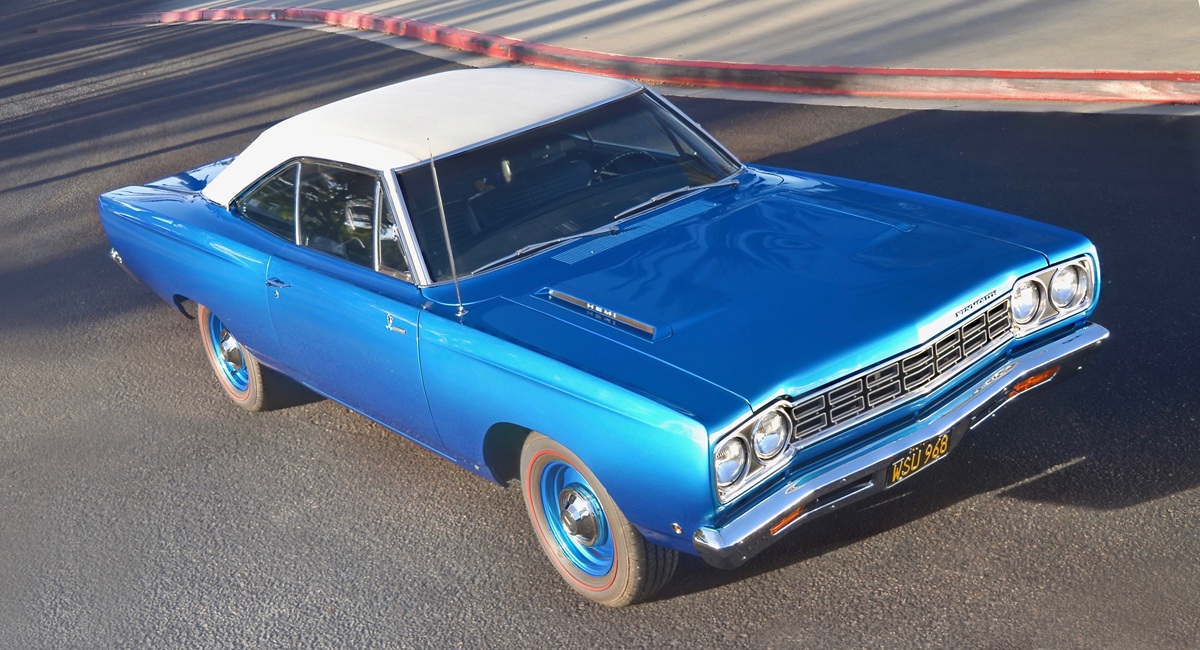
For the sum of $3,034.00, a new Hardtop Road Runner could be purchased, plus destination charge (varied as to the distance from the Assembly Plant to the dealership). In the case of the pictured feature car, there were few options; however, the one that really mattered was “Option Code 73”, which meant 426 HEMI 2-4bbl engine and that additional cost was $714.30. Because ’68 Road Runner models came standard with 4-speed manual transmissions, the other cost associated with ordering a HEMI engine with 4-speed was the mandatory Code 408 heavy duty performance axle, which added $138.90. The differential was the Dana 60 (9.75-inch diameter ring gear) with 3.54:1 ratio (Sure-Grip). HEMI engine cars came with the large 70-amp battery standard equipment. HEMI engine cars also received thicker torsion bars, now 0.92-inch diameter as compared to the 383 cars which had 0.88-inch bars. Front stabilizer bar diameter: .94-inch.
Perhaps the only feature of HEMI engine cars that wasn’t hyped up front and center in the advertising promotions was that it did NOT include the Chrysler 5-year/50,000-mile warranty. They knew it was very likely these engines would see a lot of full-throttle activity! The warranty on these cars was 1-year/12,000-miles.
LEGENDARY HEMI HEAD 426
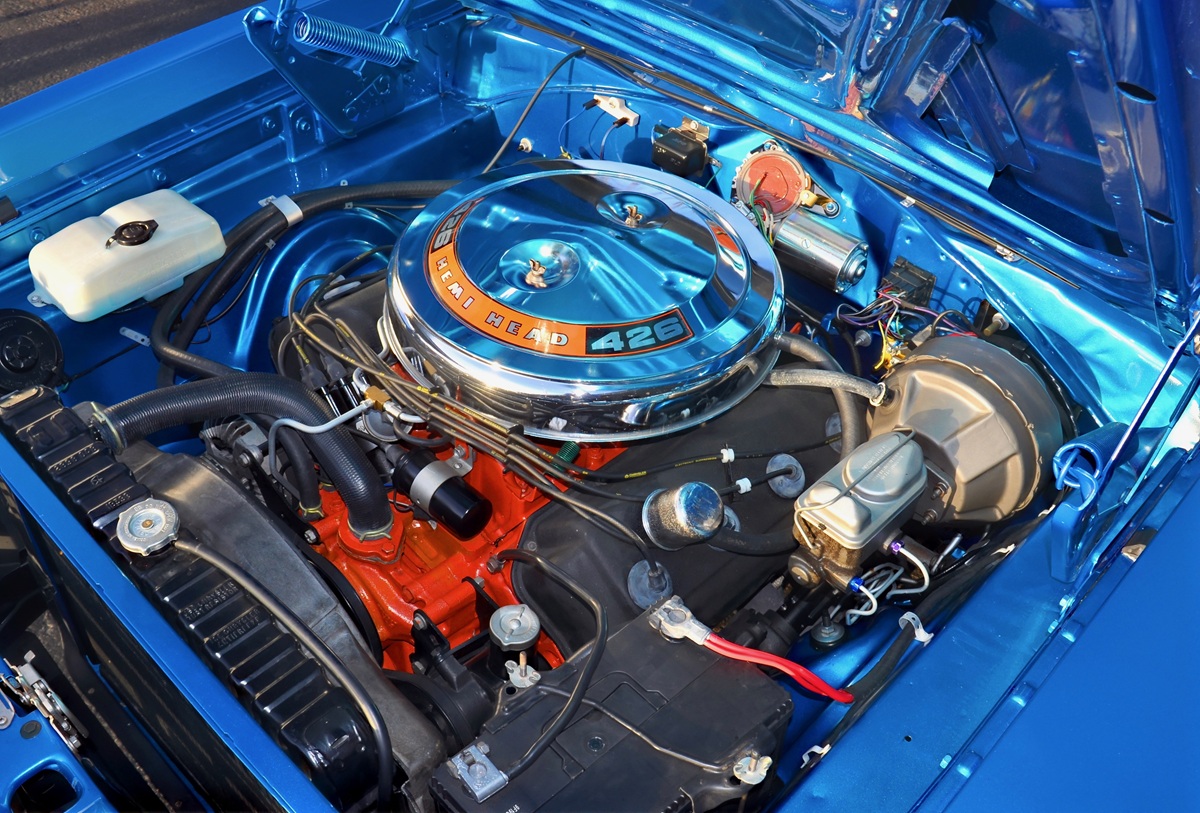
Spectacular visuals, the 426 HEMI engine! Stellar internals: Hemispherical combustion chambers, 2.25-inch intake, 1.94-inch exhaust valves, huge intake and exhaust ports, forged steel rockers, 10.25:1 pistons, mechanical lifter camshaft. Add in the double-breaker ignition, 2×4 inline carburetion and high-flow 4-into-1 exhaust manifolds and you’ve got 425 horsepower, 490 lb-ft of torque and streetable!
HARDTOP INTERIOR

The Hardtop Road Runner automatically received a premium steering wheel (with lower horn ring and padded center hub), plus higher grade vinyl seat material. AM radio optional.

The standard Belvedere instrumentation was pretty basic, flavor of a taxi cab in fact!
HURST SHIFTER W/ORIGINAL BALL
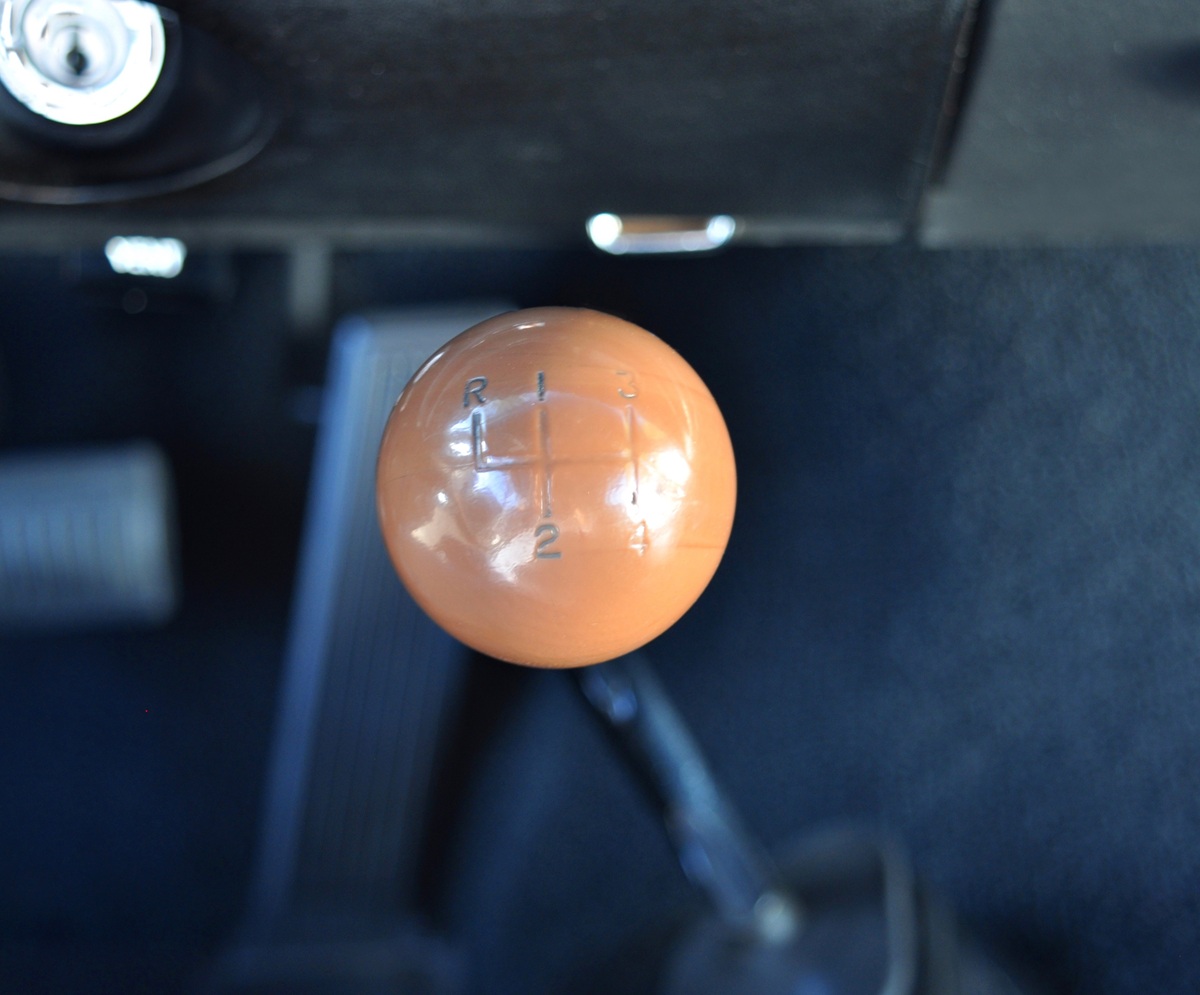
Original ball on the factory-installed Hurst shifter! Yes, it could have received a new replacement, however this one adds character! The Chrysler New Process A833 4-speed gearbox featured all synchromesh gears with these ratios: 1st 2.65:1, 2nd 1.93:1, 3rd 1.39:1 and 1.00:1 4th. 11-inch diameter clutch.
CALIFORNIA BLACK PLATE

Highly desirable worldwide, a car that came from California is something of a bonus, as it likely is not a vehicle that suffered from salt on the road, which causes body rust. This is a California car and has always been in the state, San Diego area, which is a double bonus because of the mild weather. Black license plates with yellow (non-reflective) digits were issued from the CA DMV to new cars from the years 1963 to 1969.
DOG DISH
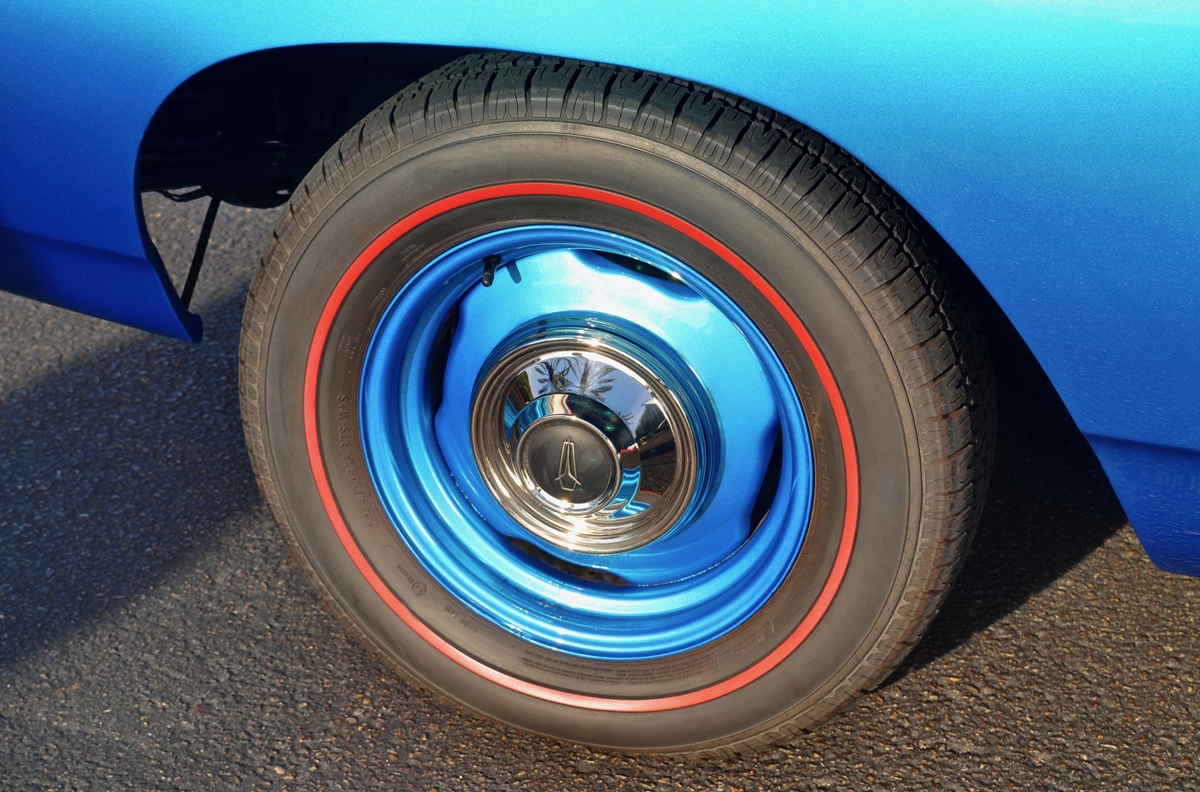
Standard equipment on HEMI Road Runners were 15 x 6-inch diameter steel wheels, stainless steel hub caps. F70-15 (Red Stripe) tires standard. Modern replacement tires, sized P215/70R15 now on the car.
DECOR GROUP REAR TRIM
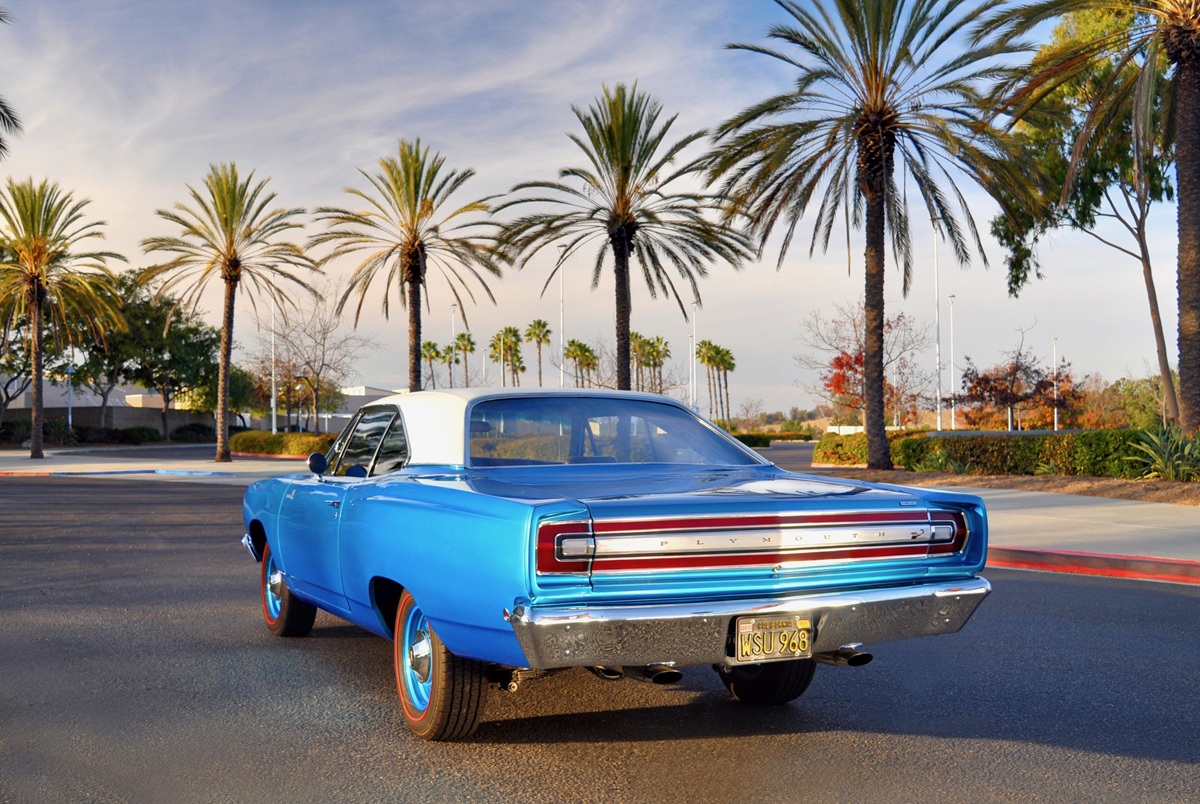
Road Runner Hardtops can easily be recognized from the rear as they came with the full-width stainless steel deck lid trim, adding some flash to the back of the car’s presentation. Optional White vinyl top (Code 307) adds more style to this particular car.

With the hardtop option came a color Road Runner sticker, with motion, affixed to the RH-side of the deck lid panel. Note the small but noticeable rectangular HEMI badge!
NEW IMPROVED BEEP-BEEP
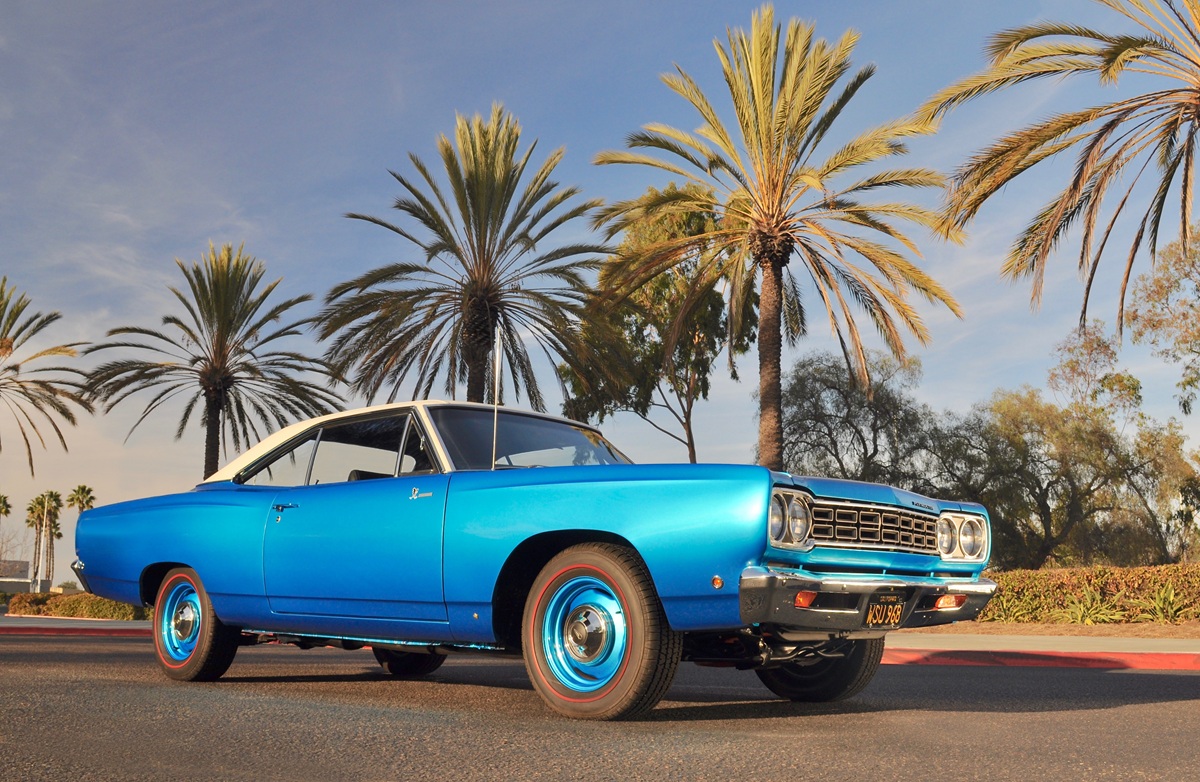
One has to squint a bit when the windows are rolled up on the hardtop as it looks strikingly close to the coupe, and that’s because they both share the same roofline. Here’s how the advertising people copy announced the extra-cost hardtop version:
“We hoped you would take the Road Runner. But this is ridiculous. It’s already our hands-down success of 1968. But we’re not taking any chances. Beep-beep. Here comes another Road Runner. This one you asked us for. This Road Runner is a hardtop.
Naturally, it has Road Runner’s four-speed floor shift. The heavy duty suspension and brakes. The red lines wide treads. And the beep-beep horn. All standard.
But the hardtop interior is fitted with premium vinyl. It makes for an overall nicer feeling inside.
Still, you wouldn’t call Road Runner posh. But the price isn’t, either. Go see the new hardtop. Or the original best selling sport coupe.
It’s just a nice friendly bird. And the way things look, it’s not about to go extinct.”
BIRD SIGHTINGS
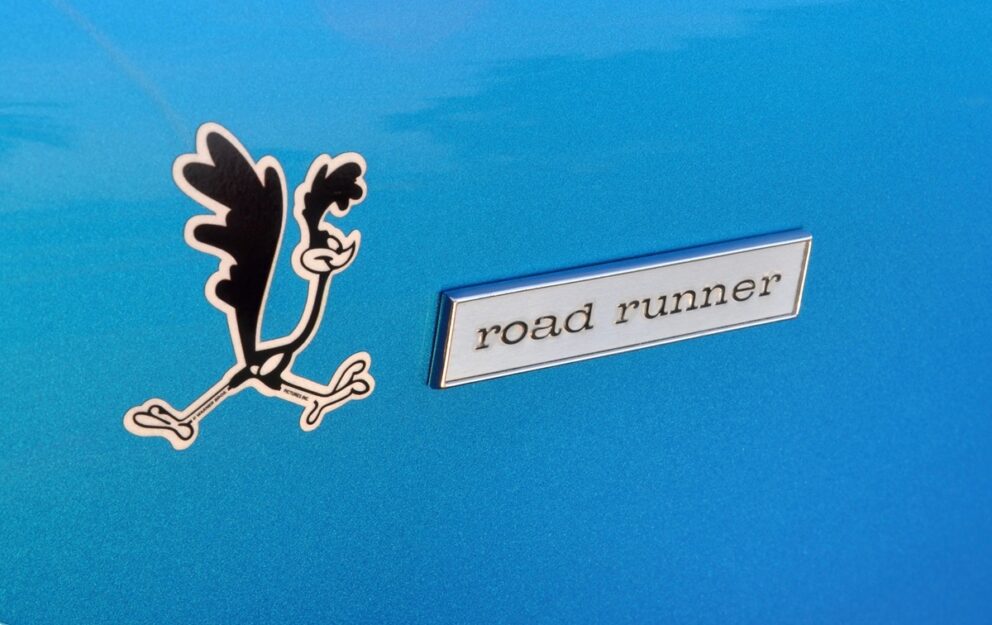
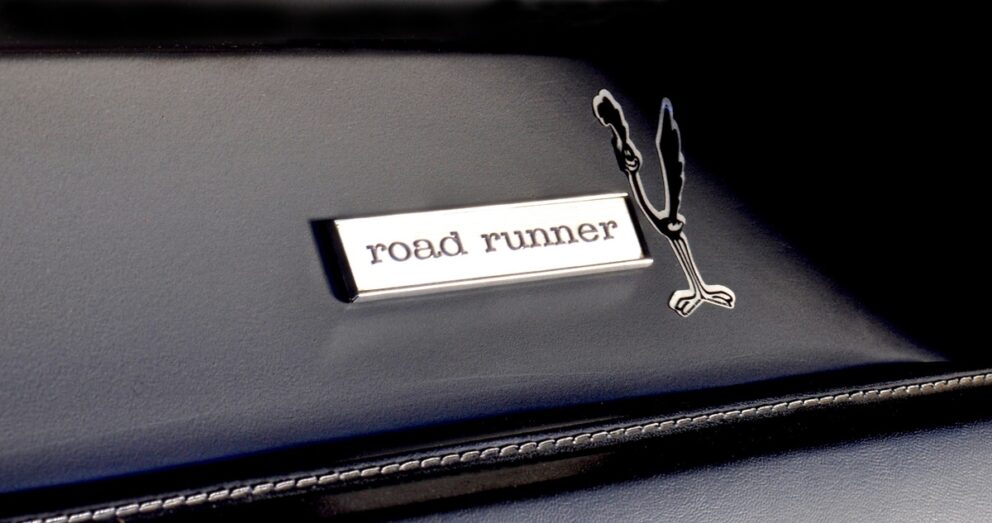
With permission from Warner Brothers, black and white Road Runner cartoon stickers were affixed to the doors and dash; hardtops had a color motion cartoon sticker on the deck lid trim panel.
HOOD WARNINGS
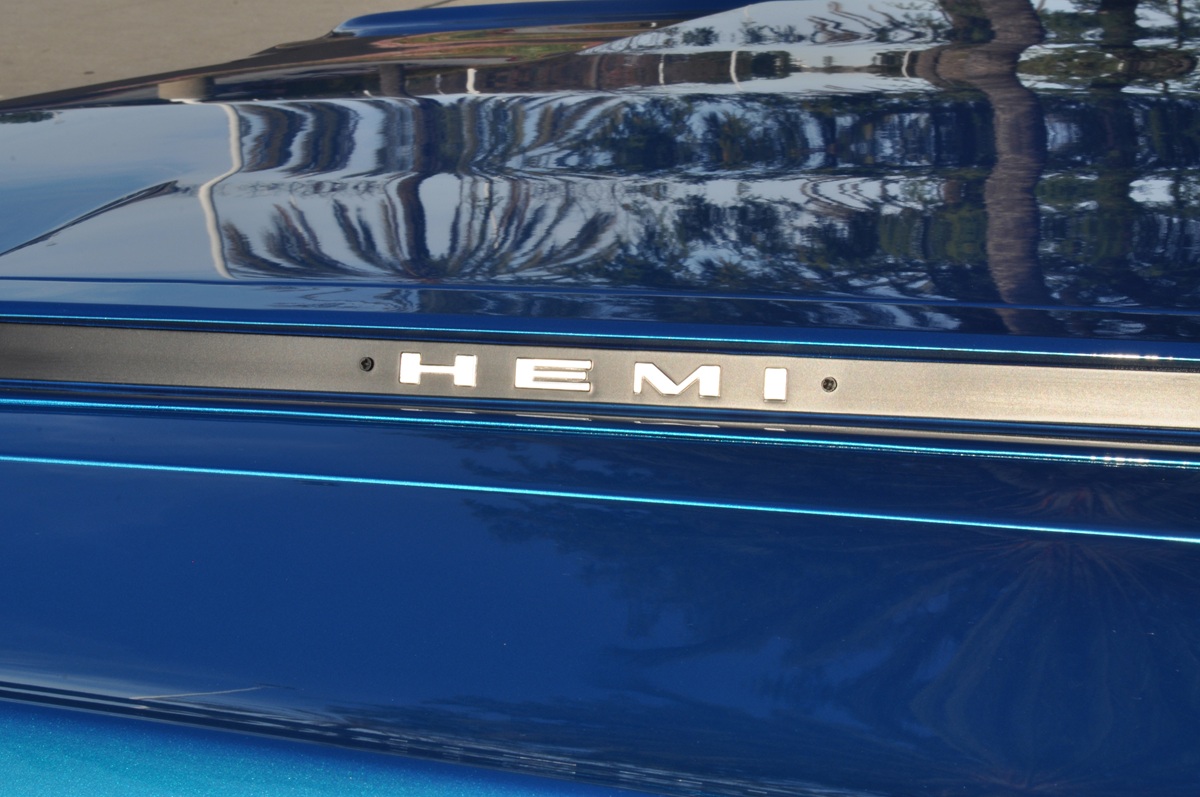
At first glance, the car has that “plain Jane” look to it. Then the hood call-outs say “H E M I”, which clearly reveals the powerplant to rivals.
1,250 CUBIC FEET PER MINUTE

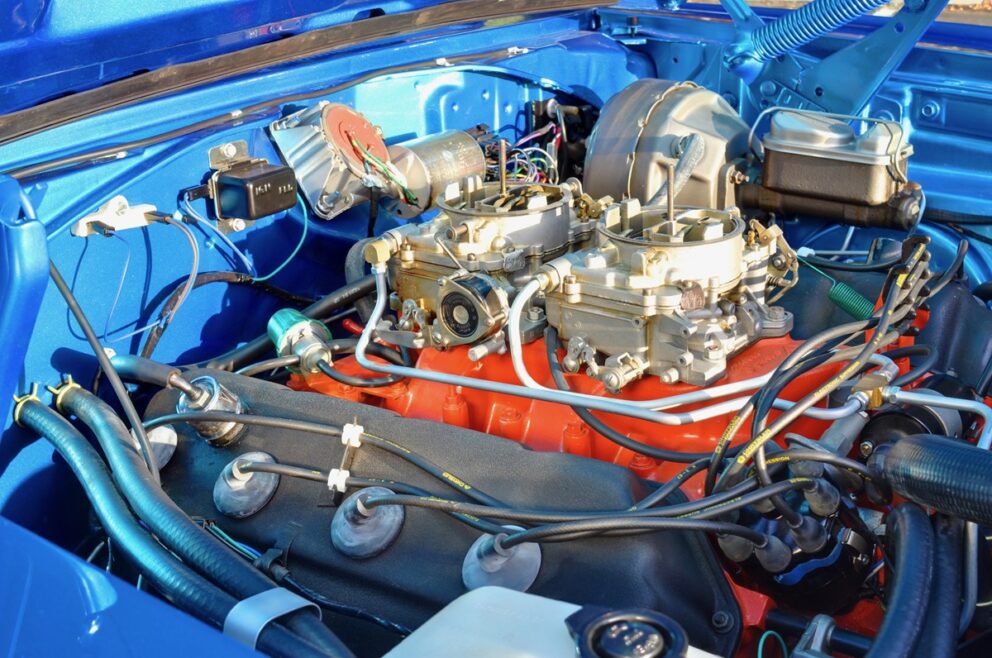
An inline pair of Carter 4-barrels were part of the 426 HEMI engine street package, 1,250 cfm (625 x 2), progressive throttle linkage atop a cast aluminum manifold. Electric choke on rear carb.
KEEP IT COOL
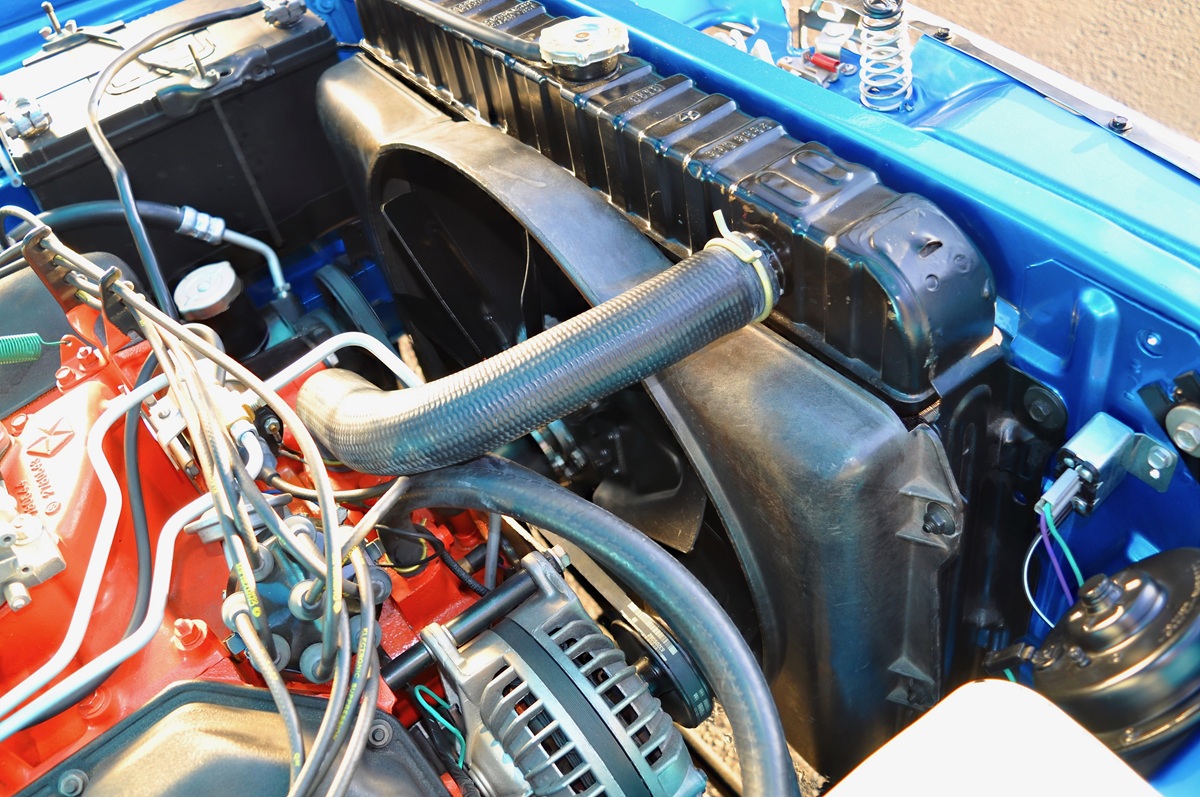
Factory equipment: Large radiator (17-quart coolant capacity), 7-blade 18.5-inch fan with Viscous drive, wrapped with full shroud.
3:54 DANA 60
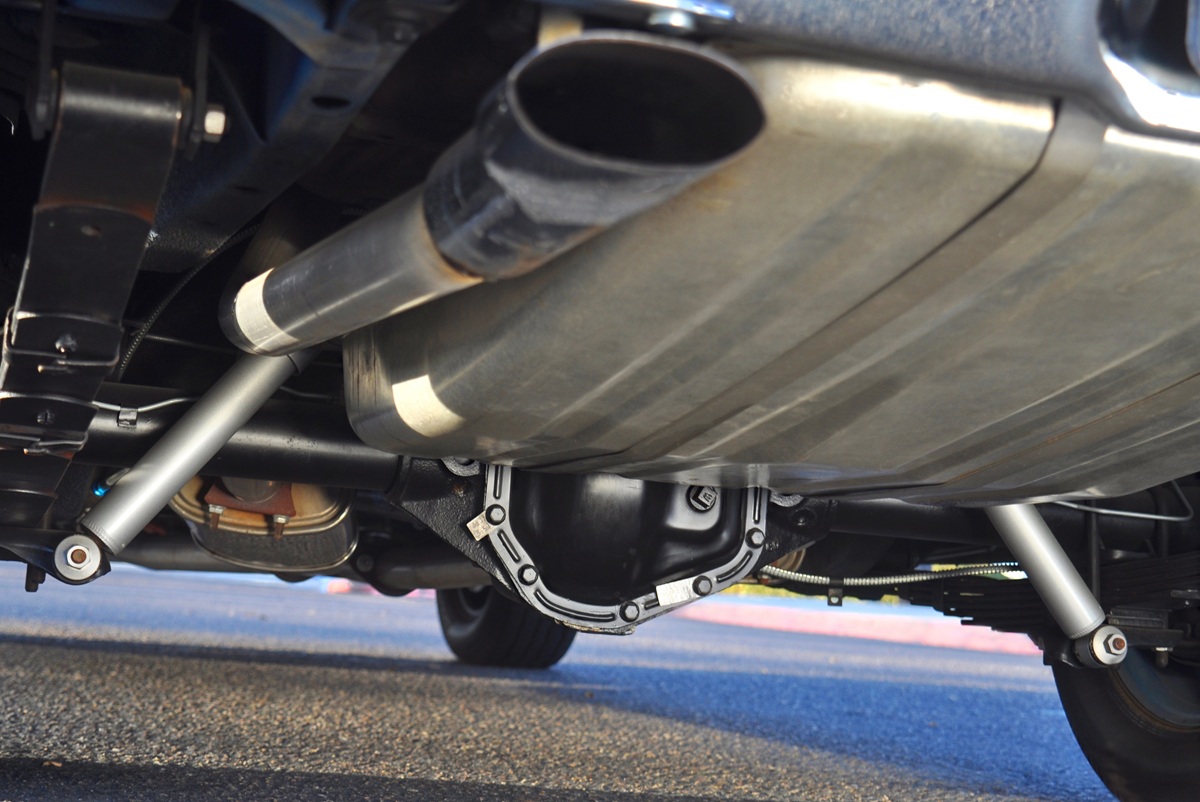
One look to the rear underside of the car shows it’s equipped with the big Dana 60 rear axle, which clearly means this is not a “383” car! 1968 4-Speed HEMI Road Runners were spec’d out from the factory with the 9.75-inch ring gear rear end, 3.54:1 gears. HEMI engine cars were equipped with six leafs on the left, seven on the right, to provide directional stability under acceleration.
FENDER TAG INFO
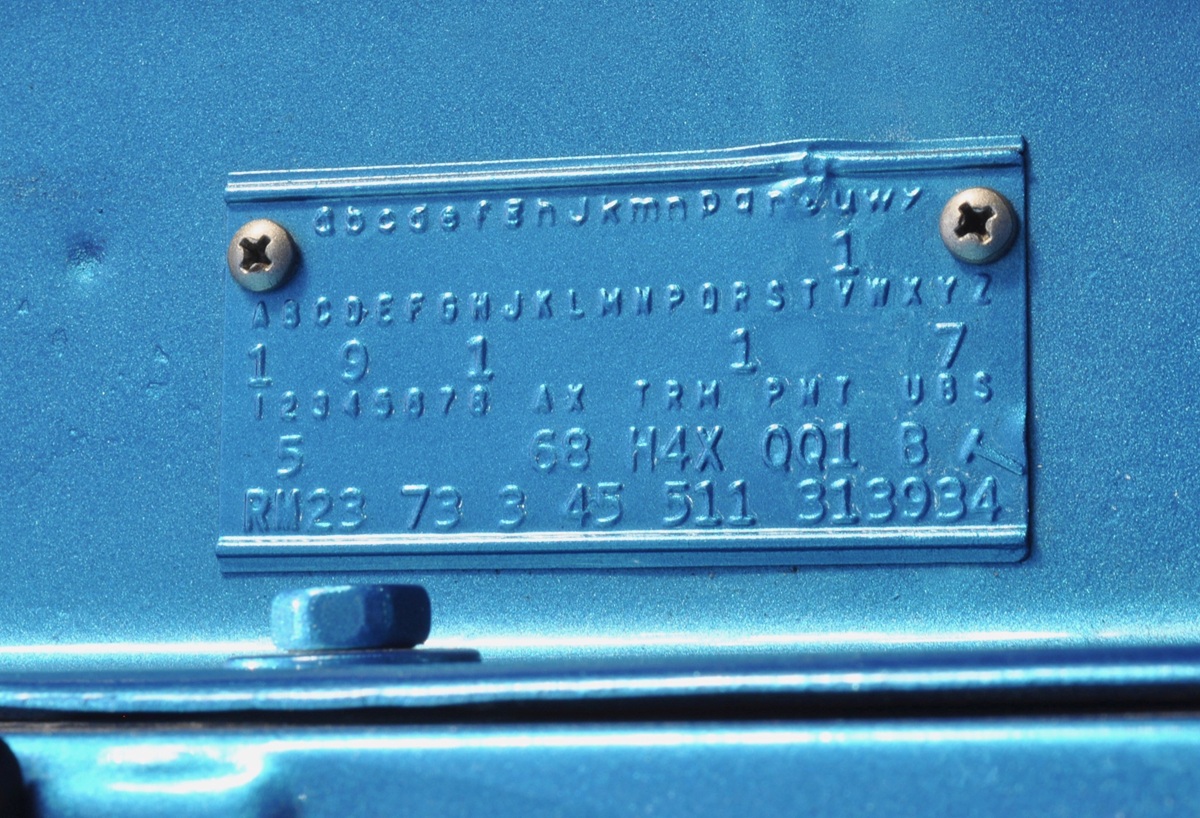
Located under the hood on top of the driver’s side inner fender, the Fender Tag is filled with numbers and letters and back when these Mopar® muscle cars were built, nobody paid any attention to this data! However, once the value started to go up and with the big auto auctions on TV, well everything changed and the various numbers got noticed and had BIG meaning.
On this 1968 Plymouth Belvedere, the important data shown on the plate is: RM23 = Road Runner Hardtop 73 = 426ci 8 bbl 68 = 1968 45 = Red Streak Tires H4X = Black Interior A = Lynch Road, MI Assembly Plant QQ1 = Bright Blue Metallic.
ORIGINAL F70 – 15 RED STREAK SPARE
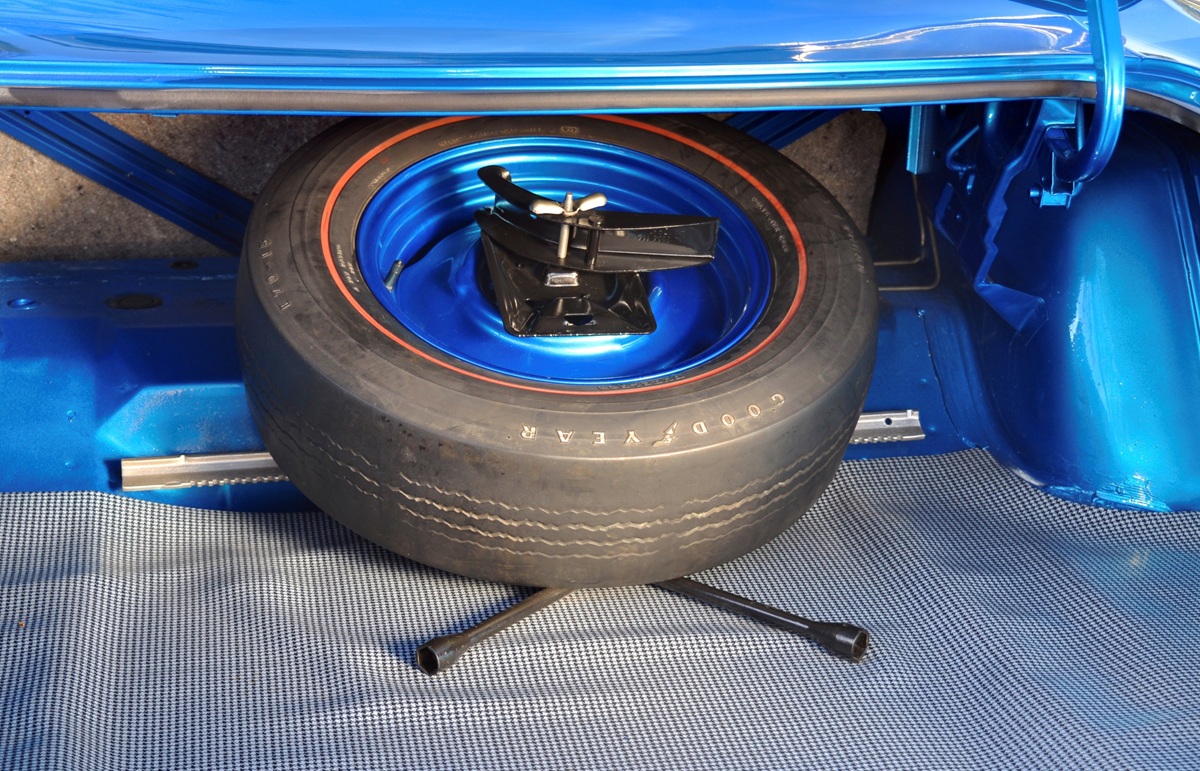
One of the original Goodyear F70-15 Red Streak tires, albeit with wear, survived all the years! These were standard on HEMI applications.
CHROME DOME
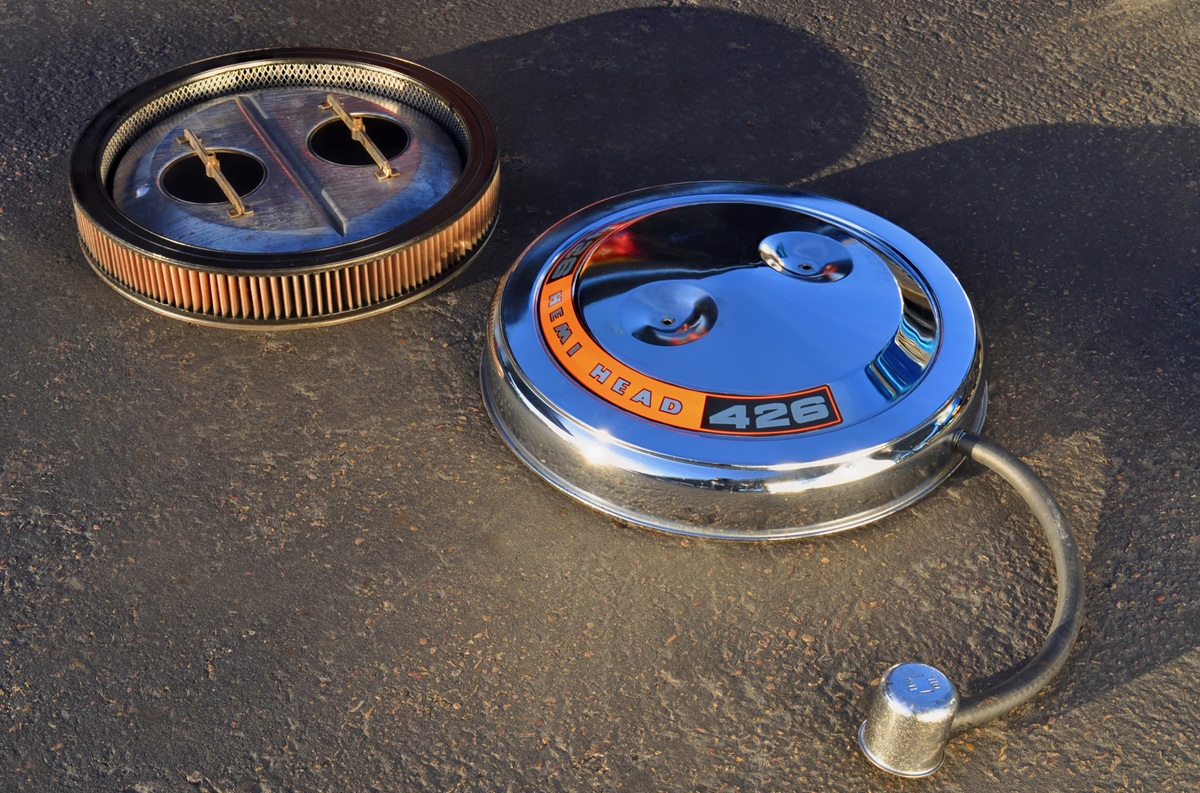
One thing nice about having a very complete and original car is that there’s no reason to have to search for an original “Chrome Dome” HEMI air cleaner assembly! A K&N E-1920 replacement filter element is used.
ORIGINAL SPECIFIC 426 HEMI OPERATING INSTRUCTIONS

One of the great things about being able to purchase a car of this caliber from the original owner is in getting important artifacts that came, and belong with the automobile. Case in point: perfect condition 1968 Belvedere 426 Hemi Operating Instructions & Warranty booklet. Only Road Runner and GTX buyers received this with their new HEMI engine-powered vehicle purchases.
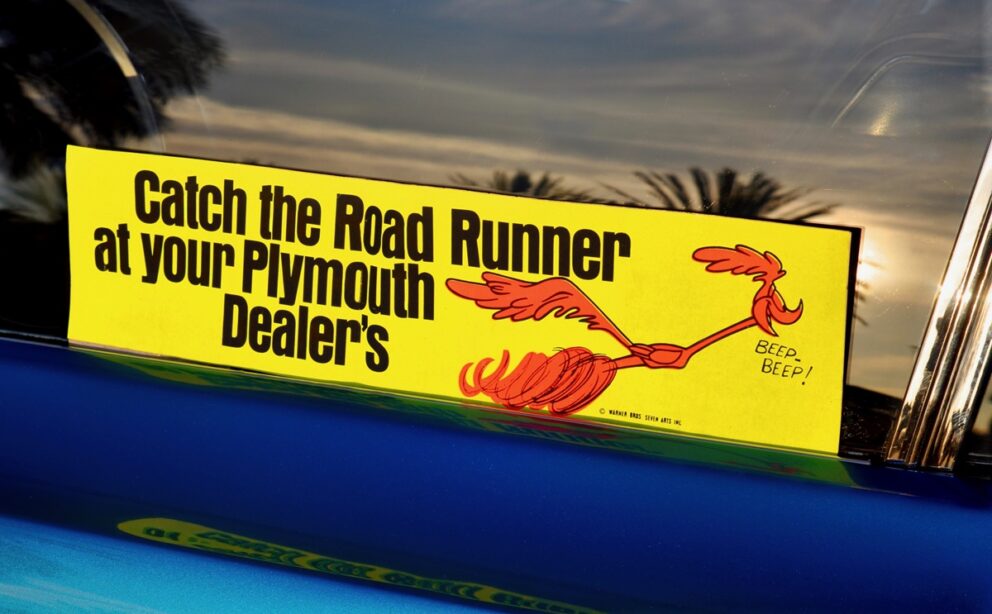
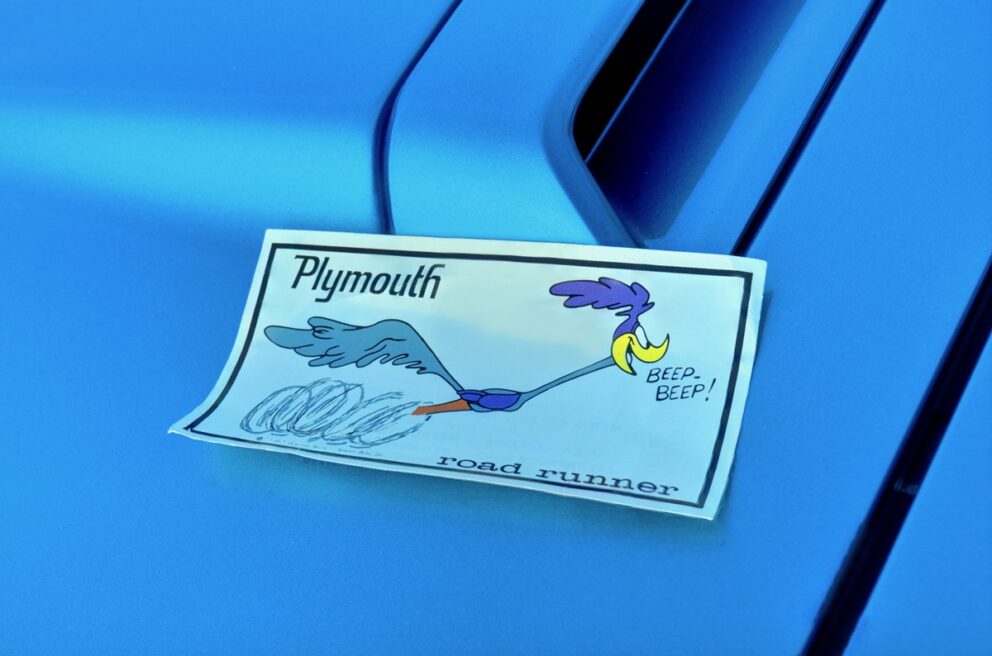
Some fun era-correct Road Runner mementos had been collected over the years and they saw the light of day when we took the photos, it was like it was the year 1968 all over again!
PRISTINE CONDITION
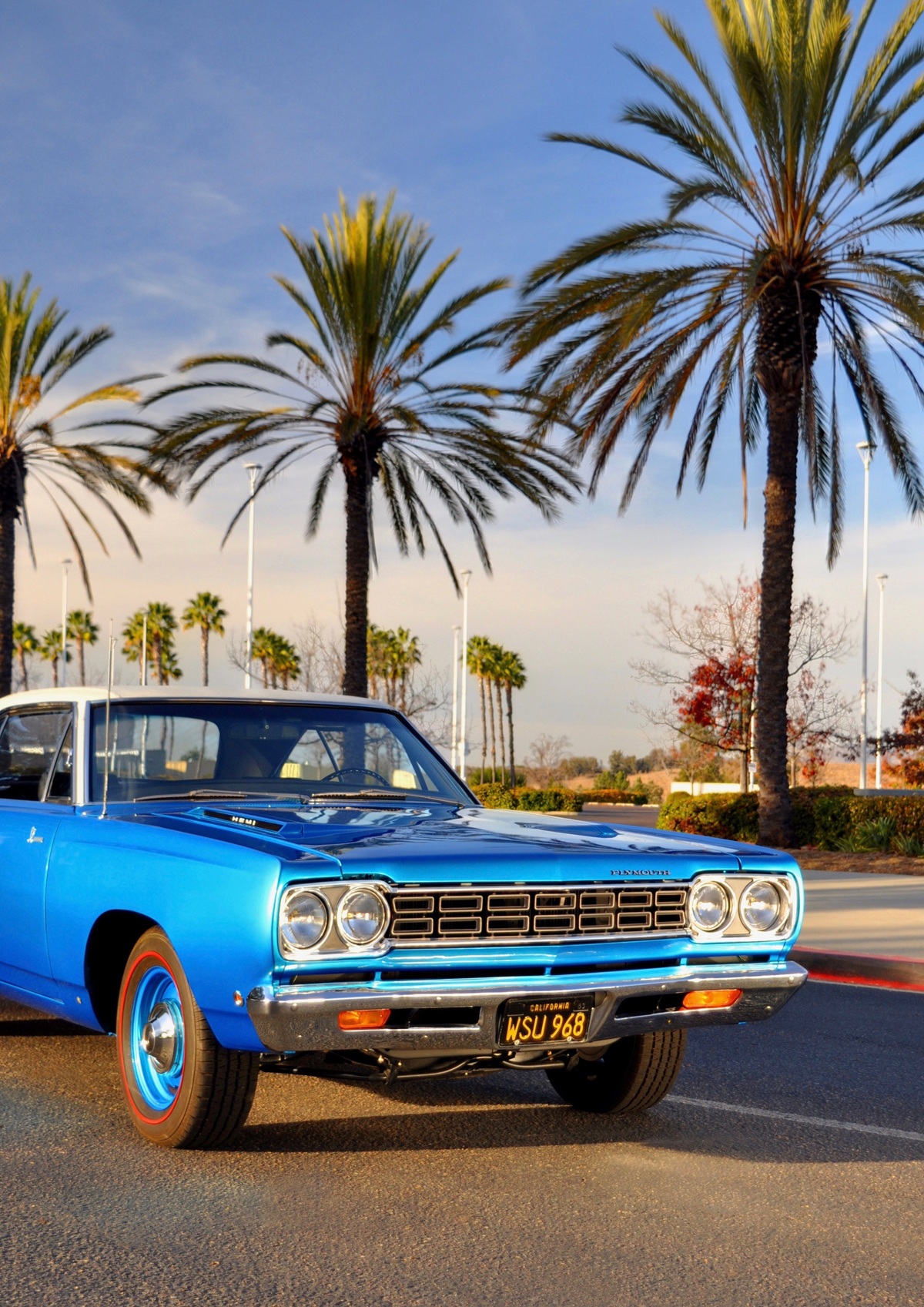
What could make a better presentation for this San Diego-based HEMI ‘Bird? Palm Trees and California sunshine, the QQ1 hue stands out (a one-year-only color) and such a great offsetting color those Red stripe tires provide, just the Mother Mopar had intended for 1968!
HEMI FAMILY CAR
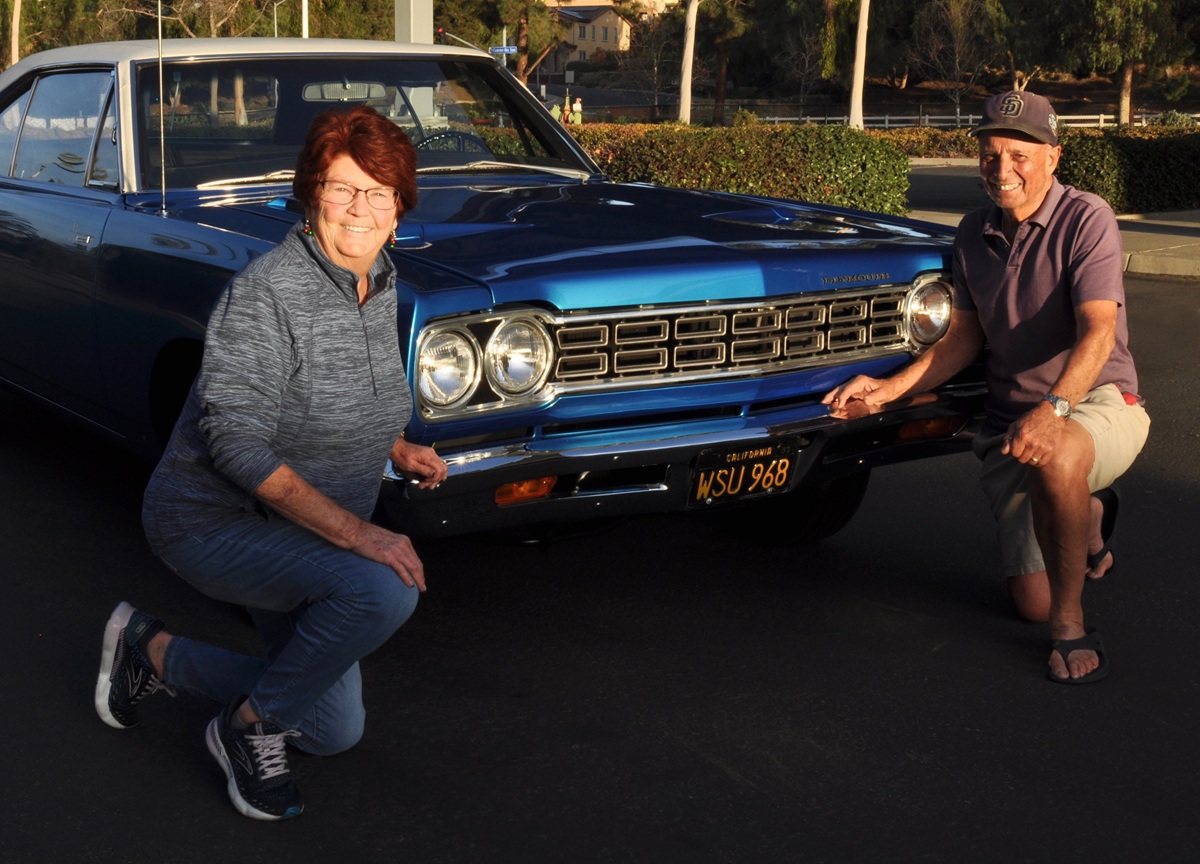
Purchased in August 1972 from the original owner, John and Mary Signorelli drove the HEMI engine powered car as a daily driver for many years, a family car. Talking with Mary about her experiences, it was the car that she would sell and deliver Avon makeup products with as well! She explained that one of the areas she covered was La Jolla, which has a lot of steep hills, making it a particularly challenging chore with that manual transmission and stiff clutch. When asked why she was delivering Avon in a 4-speed HEMI Road Runner, she had the answer that explained it all: it was their only car! That’s all part of why Mopar muscle cars are so cherished today, a big part of Americana and with high horsepower to go along with the era! Plus, they still have the rare HEMI engine car all these years later. Hard to top that story!
RAW BODY SHELL

What started out as a couple of minor maintenance-type services and fixes on the car at the shop of Lee Meyer, Santee, CA, turned out to be a decision from John and Mary to go ahead and authorize a complete restoration on the car! It was a running automobile and still in presentable shape, a bit tired but complete, and the choice to go all-out resulted in an award-winning final completion, with extreme attention to detail. Meyer has vast amounts of experience of all things Mopar and specializes in complete restoration work. This project was very ideal as it was a complete, original car and rust-free specimen, thanks to spending its entire time in the warm Southern California climate and away from any Pacific Ocean salt spray.
The car features power steering and power disc brakes, which were popular factory options.
How quick was a bone-stock HEMI Road Runner back in the day? Car & Driver Magazine was able to coax a 13.54-second run with their 1968 HEMI Road Runner test car, with a top 1/4-mile speed of 105.10 mph (TorqueFlite, 3.55:1 gears). Lack of traction is the reason a car of this caliber had drag strip times that never showed their true potential, 1968 rubber was not known for good starting line bite!
With only 108 1968 HEMI 4-speed Road Runner Hardtops built, it’s a rare Mopar muscle car indeed, and the flawless restoration work truly makes this one a real contender for perhaps the best one on the planet!
John and Mary Signorelli are members of the Mopar Club of San Diego and they enjoy taking their classic HEMI engine car out to local car gatherings and club events!
Author: James Maxwell
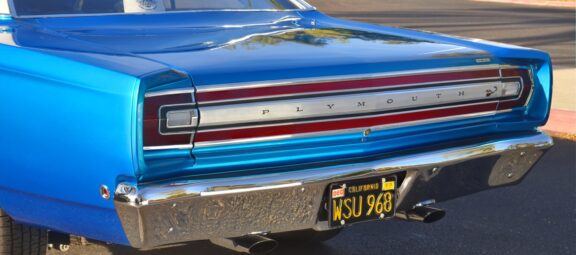
2 Comments
Thanks for the history and detailed research for this article. It is truly an amazing car with an amazing couple caring for it all of these years.
Great article on a great car! Thank you for providing info on the value and history of black plates as my SD bird has those as well.